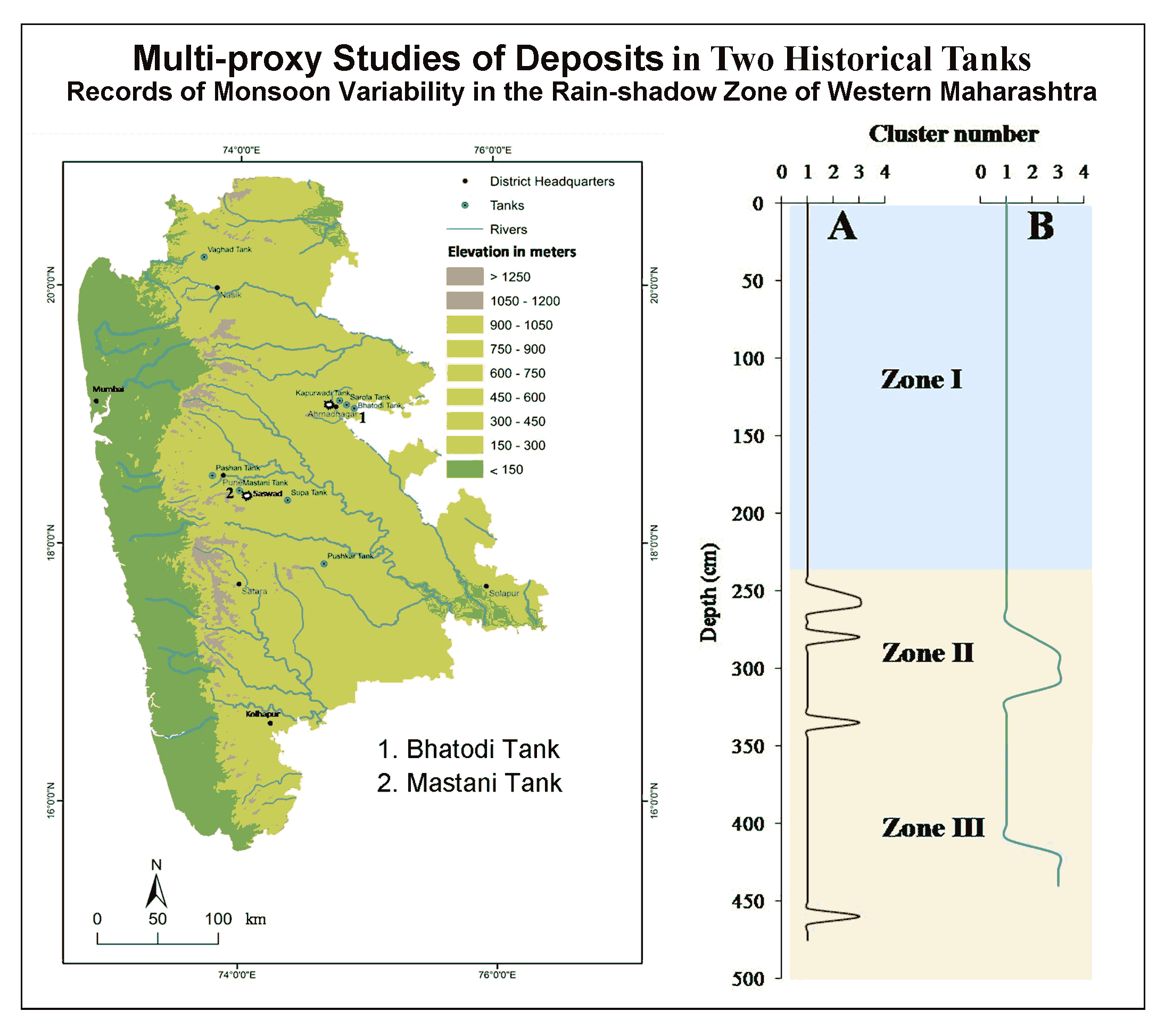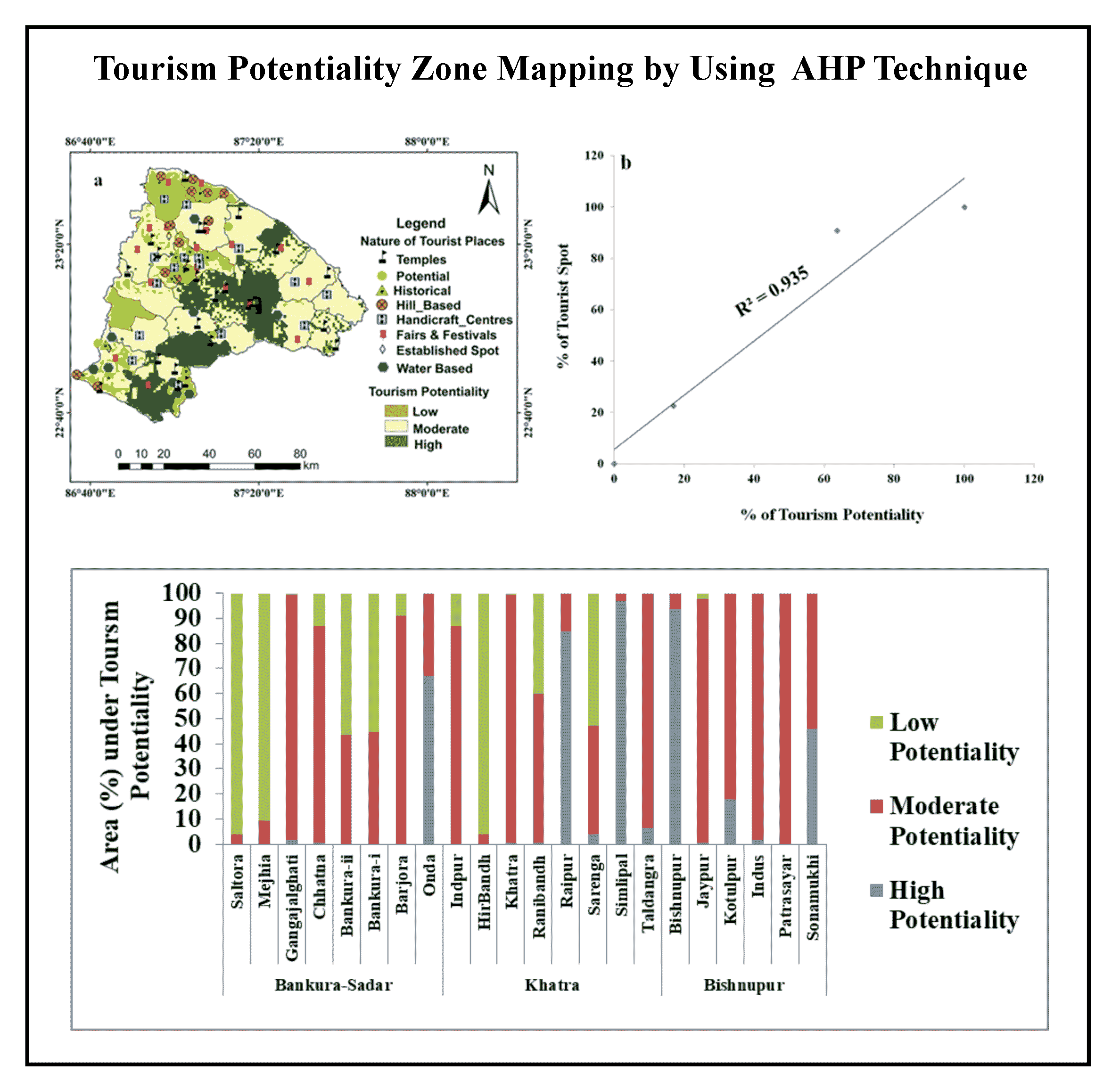Article Title :
Records of Monsoon Variability in the Rain-shadow Zone of Western Maharashtra, Based on Multi-proxy Studies of Deposits in Two Historical Tanks 
6 (2022)
94-105
Monsoon Variability , Multi-proxy studies , Rain-Shadow Zone , Short-term events , Tank sediments


Global climate change is the predominant socio-economic, environmental and political issue confronting the mankind in the 21st century. The humanity in future is likely to depend upon the realistic assessment of the present climate and reasonably accurate prediction of the future climate change. This requires better understanding of the dominant characteristics of past climates. Lakes and tanks located in the semi-arid and arid regions are particularly suitable for palaeoclimatic studies, because of their high sensitivity to shifts in precipitation. The present study has been carried out using multi-proxies (e.g., textural, geochemical, mineral magnetic and charophytes studies) of sediments of two historical tanks namely, Bhatodi (~450 yrs old) and Mastani (~270 yrs old), from the rain-shadow zone of Western Maharashtra to understand the nature of monsoon variability in the catchment area of the tanks. The multi-proxy analyses of 4-5m thick sediment sections have revealed that with the exception of some minor sedimentary units in the middle, the lake sediments are by and large similar. This implies only short-term, subtle to modest changes in the rainfall and runoff conditions in the catchment area during the last 2-3cm. There is no evidence a major shift in monsoon rainfall conditions in the rain-shadow zone.

The multi-proxy data of the tank sediments can provide the nature of monsoon of variability in the catchment of historical tanks.
Tank sediment samples were analyzed from 4-5 m thick sections to understand hydrodynamic condition.
The upper (and younger) sediments show considerable variations in the sediment characteristics.
The minor variations in the grain size in the tank deposits only represent such high-magnitude random event.
The study shows only short-term, subtle to modest changes in the hydrodynamic conditions in the catchment area.
Band, S. and Yadava, M. G., 2020. Addressing past monsoon variability from speleothems. Curr. Sci., 119, 244-254.
Basavaiah, N. and Khadkikar, A. S., 2004. Environmental magnetism and its application towards palaeomonsoon reconstruction. J. Ind. Geophys. Union, 8, 1-14.
Basavaiah, N., Juyal, N., Pant, R. K., Yadava, M. G., Singhvi, A. K. and Appel, E., 2004. Late Quaternary climate changes reconstructed from mineral magnetic studies from proglacial lake deposits of Higher Central Himalaya. J. Ind. Geophys. Union, 8, 27-37.
Chauhan, M. S., Mazari, R. K. and Rajagopalan, G., 2000. Vegetation and climate in upper Spiti region, Himachal Pradesh during late Holocene. Curr. Sci., 79, 373-377.
Dearing, J. A., 1999. Holocene environmental change from magnetic proxies in lake sediments. In Maher, B. A. and R. Thompson (eds.). Quaternary Climates, Environments and Magnetism, Cambridge University Press, 231-278.
Gazetteer of the Ahmednagar District, 1976. Gazetteers Department, Government of Maharashtra, Mumbai.
Gunaji, M., 2010. A travel guide offbeat tracks in Maharashtra, Popular Prakashan, Mumbai, 239-240.
IPCC [Intergovernmental Panel on Climate Change], 2007. Climate Change: Fourth Assessment Report of the Intergovernmental Panel on Climate Change Core Writing Team, R.K Pachauri and A. Reisinger (eds.). IPCC, Geneva, Switzerland, 104.
IPCC [Intergovernmental Panel on Climate Change], 2013. Climate Change 2013: The Physical Science Basis. Contribution of Working Group I to the Fifth Assessment Report of the Intergovern-mental Panel on Climate Change [Stocker, T.F., D. Qin, G.-K. Plattner, M. Tignor, S.K. Allen, J. Boschung, A. Nauels, Y. Xia, V. Bex and P.M. Midgley (eds.)]. Cambridge University Press, Cambridge, United Kingdom and New York, NY, USA, 1535.
Juyal, N., Pant, R. K., Basavaiah, N., Bhushan, R., Jain, M., Saini, N. K., Yadava, M. G. and Singhvi, A. K., 2009. Reconstruction of Last Glacial to early Holocene monsoon variability from relict lake sediments of the Higher Central Himalaya, Uttrakhand, India. Jour. Asian. Earth. Sci., 34, 437-449.
Kale, V. S., Gupta, A., and Singhvi, A. K., 2003. Late Pleistocene-Holocene Palaeo-hydrology of monsoon Asia. In: Palaeohydrology, Understanding Global Change. K. J. Gregory and G. Benito (eds.). John Wiley and Sons Ltd, Chichester, 213-232.
Prasad, S., Anoop, A., Riedel, N., Sarkar, S., Menzel, P., Basavaiah, N., Krishnan, R., Fuller, D., Plessen, B., Gaye, B., Rohl, U., Wilkes, H., Sachse, D., Sawant, R., Wiesner, M. G. and Stebich, M., 2014. Prolonged monsoon droughts and links to Indo-Pacific warm pool: A Holocene record from Lonar Lake, central India. Earth Planet. Sci. Lett., 391, 171-182.
Singhvi, A. K. and Kale, V. S., 2009. Palaeoclimate Studies in India: Last Ice Age to the Present. Indian National Science Academy, New Delhi, 44.
Sinha, R., Singh, A. and Tandon, S., 2020. Fluvial archives of north and northwestern India as recorders of climatic signatures in the late Quaternary: Review and assessment. Curr. Sci., 119, 232-243.
Srivastava, P., Kumar, A., Singh, R., Oshin, D., Kumar, A., Ray, Y., Jayangondaperumal, R., Phartiyal, B., Chahal, P., Sharma, P., Ghosh, R., Kumar, N. and Agnihotri, R., 2020. Rapid lake level fall in Pangong Tso (lake) in Ladakh, NW Himalaya: A response of late Holocene aridity. Curr. Sci., 119, 219-231.
Tiwari, M. and Singh, A., 2020. Paleoclimate Studies in India. Curr. Sci., 119, 157-410.
Wunnemann, B., Demske, D., Tarasov, P., Kotlia, B. S., Reimhardt, C., Bloemendal, J., Diekmann, B., Hartmann, K., Krois, J., Riedel, F. and Arya, N., 2010. Hydrological evolution during the last 15 kyr in the Tso Kar lake basin (Ladakh, India) derived from geomorphological, sedimentological and palynological records. Quat. Sci. Rev., 30, 1-18.







